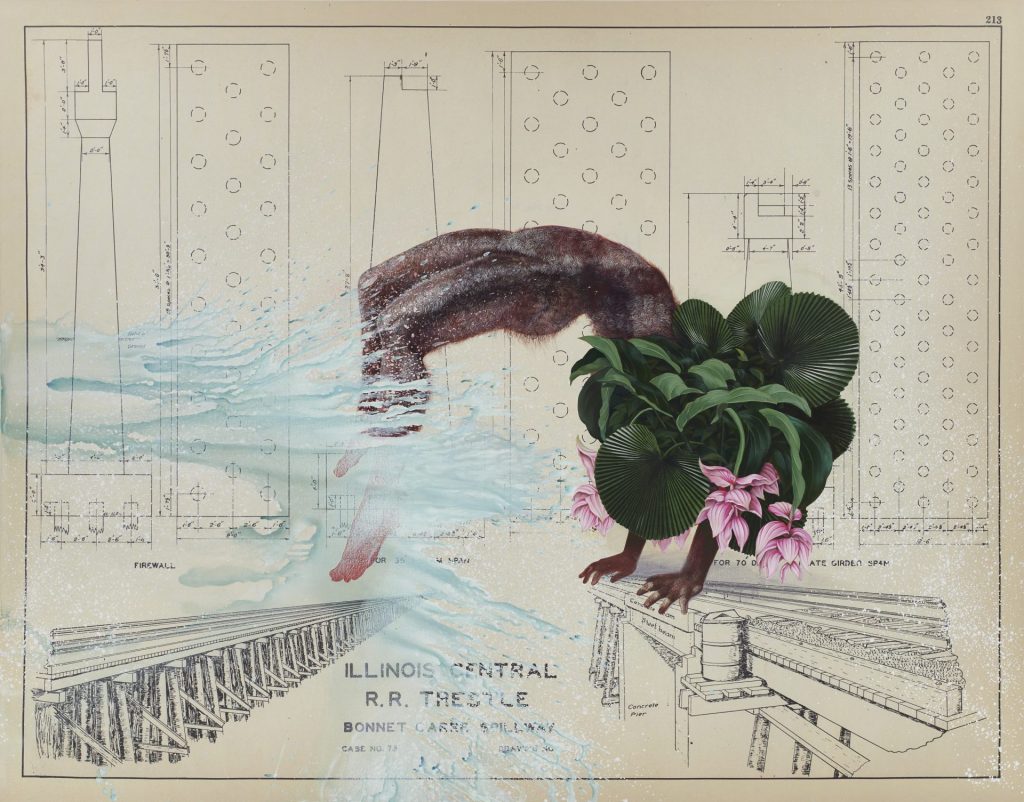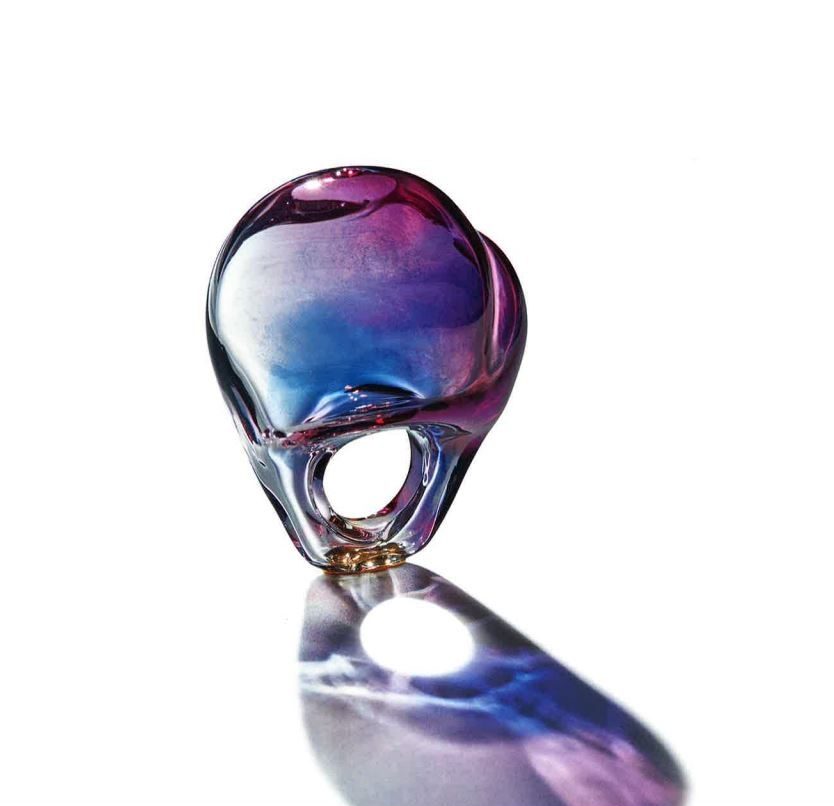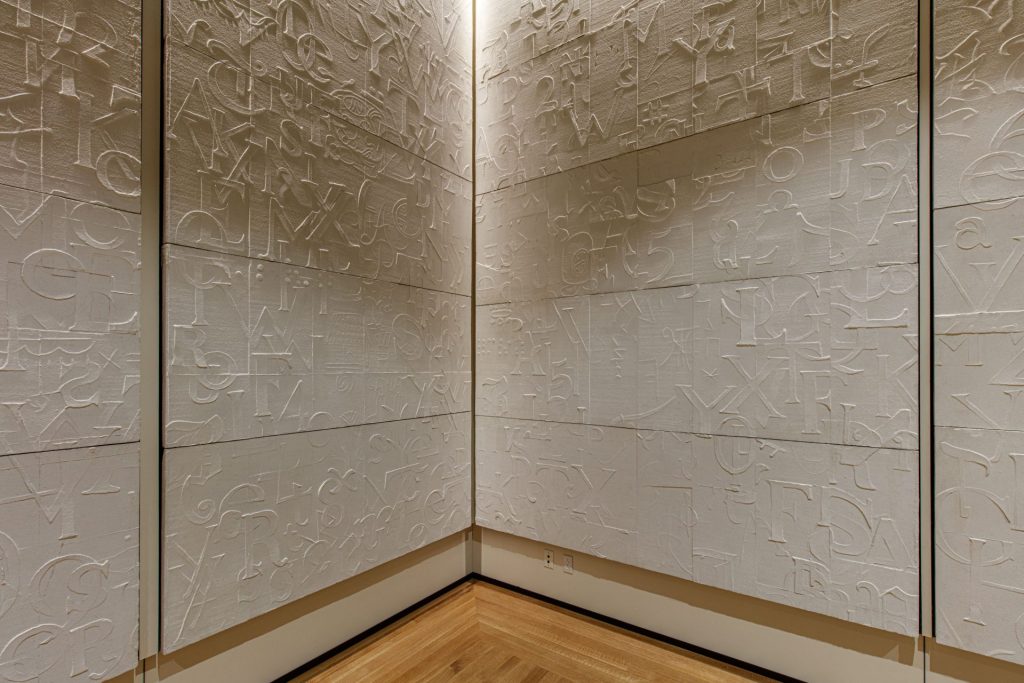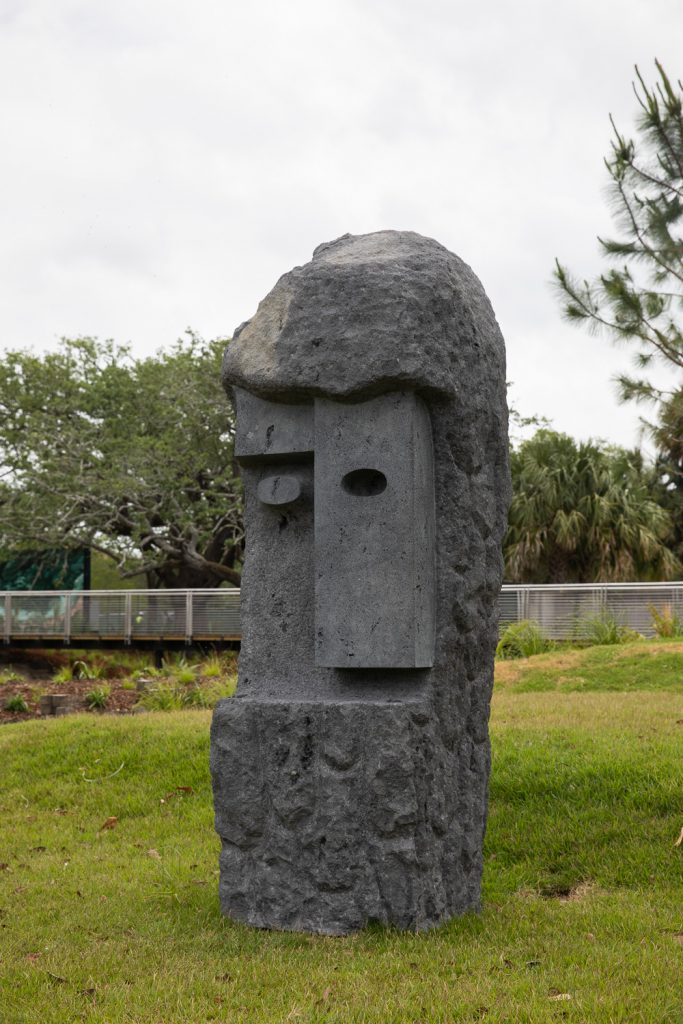New Orleans has been shaped by the cultural legacy of Hispanic culture, and residents and visitors today continue to feel and respect those influences in the architecture, linguistic diversity, cuisine, and arts of the city. The permanent collection of the New Orleans Museum of Art reflects the rich history of Hispanic and Latinx artists across millennia, as well as Indigenous objects from Pre-Columbian Mesoamerica and contemporary artworks.
NOMA is proud to celebrate the Hispanic, Latinx, and Indigenous Latin American artists currently on view. This listing includes selections from the museum’s permanent collection, including in the Sydney and Walda Besthoff Sculpture Garden; objects in Ring Redux: The Susan Grant Lewin Collection located within the Lupin Center for Decorative Arts on the museum’s second floor; and works in Fashioning America: Grit to Glamour, installed in the Ella West Freeman Galleries on the museum’s first floor. NOMA’s Arts of the Americas galleries, featuring Indigenous Pre-Columbian Mesoamerican art, are located on the third floor of the museum.
Permanent Collection, Third Floor
Visit NOMA’s permanent collection on the third floor for artworks from Indigenous civilizations such as the Maya, Veracruz, and Aztec cultures in modern-day Latin America.
- Zapotec Culture, Atoyac Valley Oaxaca, Mexico, Lintel, ca. 300-500, Limestone, Ella West Freeman Foundation Matching Fund, 67.33.
- Costa Rica, Pacific Watershed, Jaguar Effigy Ceremonial Metate, ca. 300-700, Volcanic stone, Museum purchase, 1981 Auction Fund, 81.338.
- Maya Culture, Guatemala, El Peten, El Caribe site, Commemorative Stele Portraying a Warrior King and Captive, ca. 700, Limestone, Museum purchase, Ella West Freeman Foundation Matching Fund and Edith Stern Birthday Fund, 69.9.
- Costa Rica, Atlantic Watershed, Flying Panel Ceremonial Metate, ca 900 – 1000, Volcanic stone, Anonymous gift, 76.141.

Firelei Báez, the trace, whether we are attending to it or not (a space for each other’s breathing), 2019, Acrylic, oil, and transfer on archival printed canvas, 90 x 114 3/8 in., Museum purchase, Carmen Donaldson Fund, Courtesy of the artist and James Cohan, New York, Photo by Phoebe d’Heurle, © Firelei Báez, 2019.34
Permanent Collection, Second Floor
The museum’s permanent collection is encyclopedic, and the second floor galleries truly reflect the diversity of styles, mediums, and identities represented. Explore artists and creations from all around the world on the museum’s extensive second floor.
- Juan Gris (Spanish, 1887–1927), Still Life with Lemon, 1926. Oil on canvas. The Muriel Bultman Francis Collection, 86.197.
- Matta (Chilean, 1911–2022), La Somme d’Une Fleur, 1956. Oil on canvas. The Muriel Bultman Francis Collection, 86.265.
- Carlos Rolón (American, b. 1970), Losa Criolla (Creole Tile), 2018. Ceramic tile, metal on aluminum panel. Museum Purchase; P. Roussel Norman Fund, 2018.9.
- Firelai Báez (American, b. 1981, Santiago de los Caballeros, Dominican Republic), the trace, whether we are attending to it or not (a space for each other’s breathing), 2019. Acrylic, oil and transfer on archival printed canvas. Museum Purchase, Carmen Donaldson Fund, 2019.34.

Agustina Ros, Pink is Gold (Gold Reflection series), 2018.
Blown borosilicate glass, gold. Collection of SCAD Museum of Art, Gift of Susan Grant Lewin.
Ring Redux: The Susan Grant Lewin Collection
The ninety international artists represented in Ring Redux: The Susan Grant Lewin Collection imagine jewelry as a thought-provoking medium, resonating with contemporary art, design, craft, and technology.
- Dania Chelminsky (Mexican, b. 1961, active in Israel), Mended Ring 1-6 (Mended 240 installation), 2012. Wood and brass. Collection of SCAD Museum of Art, Gift of Susan Grant Lewin.
- Agustina Ros (Argentinian, b. 1991, Active in Barcelona, Spain), Pink is Gold from “Gold Reflection Rings” series, 2018. Blown borosilicate, gold. Collection of SCAD Museum of Art, Gift of Susan Grant Lewin.
- Vania Ruiz (Chilean, b. 1977), Phototropist from “Domestic Wildness” series, 2019. Resin, fabric, ink, varnish. Collection of SCAD Museum of Art, Gift of Susan Grant Lewin.

Enrique Alférez, Symbols of Communication, 1967, New Orleans Museum of Art: Gift of Joseph Jaeger, Barry Kern, Michael White, and Arnold Kirschman, 2020.7.1-.118. © Estate of Enrique Alférez
Permanent Collection, First Floor
Located in NOMA’s Lapis Center for the Arts on the first floor, find a full-room installation of Enrique Alférez’s Symbols of Communication, which was originally created for the New Orleans Times-Picayune Building in 1967. NOMA hosts concerts, lectures, seminars, and more in this important and well-loved space.
- Enrique Alférez (Mexican-American, 1901–1999), Symbols of Communication, 1967. Plaster, rebar, paint, 118 panels. Gift of Joseph Jaeger, Barry Kern, Michael White, and Arnold Kirschman, 2020.7.1-.118.
Fashioning America: Grit to Glamour
Fashioning America: Grit to Glamour takes a broad look at fashion history with an emphasis on the spirit of innovation and the diversity of the United States’s fashion heritage. Ruben Toledo, a Cuban-American visual artist based out of New York City, served as a consultant for the exhibition. On view through November 26, the exhibition includes several Hispanic designers, a few of which are highlighted here:
- Isabel Toledo (1960–2019, born in Cuba, worked in New York City), Prototype Suit Ensemble designed for Michelle Obama, 2009 Inauguration, 2009. Felted wool, silk linings, pashmina, cotton. Isabel and Ruben Toledo Archives.
- Manuel Cuevas (born 1933 in Mexico, works in Nashville, Tennessee), Chimayo Blanket coat, 1980s. Wool. FIDM Museum at the Fashion Institute of Design & Merchandising, Los Angeles, Gift of Patrick Duncan.
- Carlota Alfaro (born 1933 in Puerto Rico), Quinceañera Dress, 1980s. Silk, beads, synthetic, metal. Lent by Tiffany Dubin.
- In the Heights, directed by Jon M. Chu (Warner Bros. Pictures, 2021). 2 minutes 10 seconds. Musical with concept music by Lin-Manuel Miranda (American b. 1980).

Pedro Reyes (Mexican, b. 1972), Epicurus, 2017, Volcanic stone, Gift of Sydney and Walda Besthoff, Installation funded by Liz and Poco Sloss, 2017.194
NOMA’s Besthoff Sculpture Garden
- Fernando Botero (Colombian, 1932–2023), Mother and Child, 1988. Bronze. Gift of Sydney and Walda Besthoff, 2003.157. Installation funded by Ann and Michael Moffitt.
- Jesús Bautista Moroles (American, 1950–2015), Las Mesas Bench, 1989. Granite. Gift of the Sydney and Walda Besthoff Foundation, 2000.211. Installation funded by Janet Hoggard Blocker in memory of John R. Blocker.
- Pedro Reyes (Mexican, b. 1972), Epicurious, 2017. Volcanic stone. Gift of Sydney and Walda Besthoff, 2017.194. Installation funded by Liz and Poco Sloss.
- Teresita Fernández (American, b. 1968), Viñales (Mayombe Mississippi), 2019. Glazed ceramic. Gift of Sydney and Walda Besthoff, 2019.2.
About Hispanic Heritage Month
National Hispanic Heritage Month, observed in the United States of America from September 15 through October 15, celebrates the histories, cultures, and contributions of American citizens whose ancestors came from Spain, Mexico, the Caribbean, and Central and South America. The observation started in 1968 as Hispanic Heritage Week and was expanded to cover a 30-day period on August 17, 1988.
September 15 is significant because it is the anniversary of the independence of Latin American countries Costa Rica, El Salvador, Guatemala, Honduras, and Nicaragua. In addition, Mexico and Chile celebrate their independence days on September 16 and September 18, respectively. Also, Columbus Day, or Día de la Raza, October 12, falls within this 30-day period.